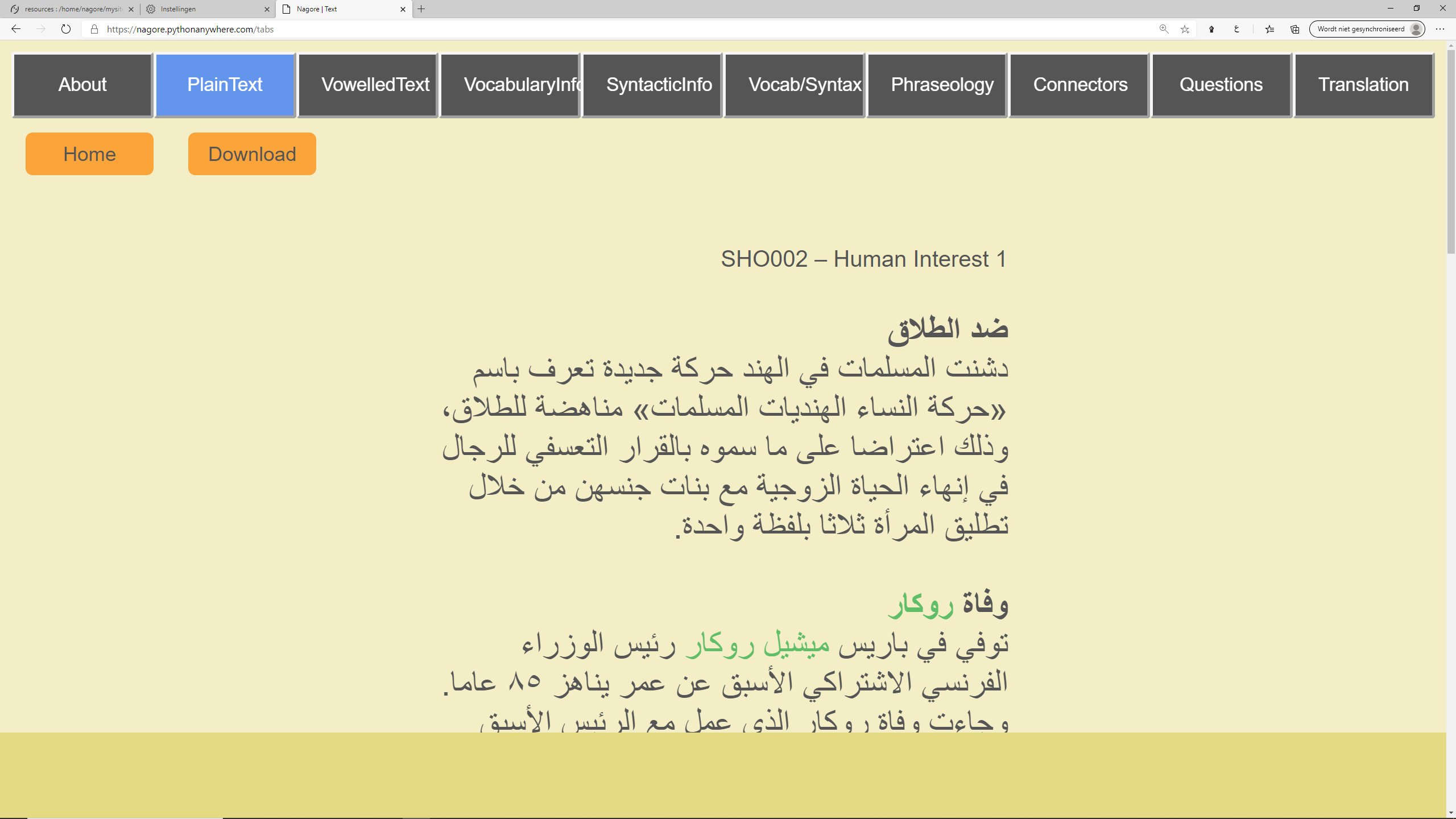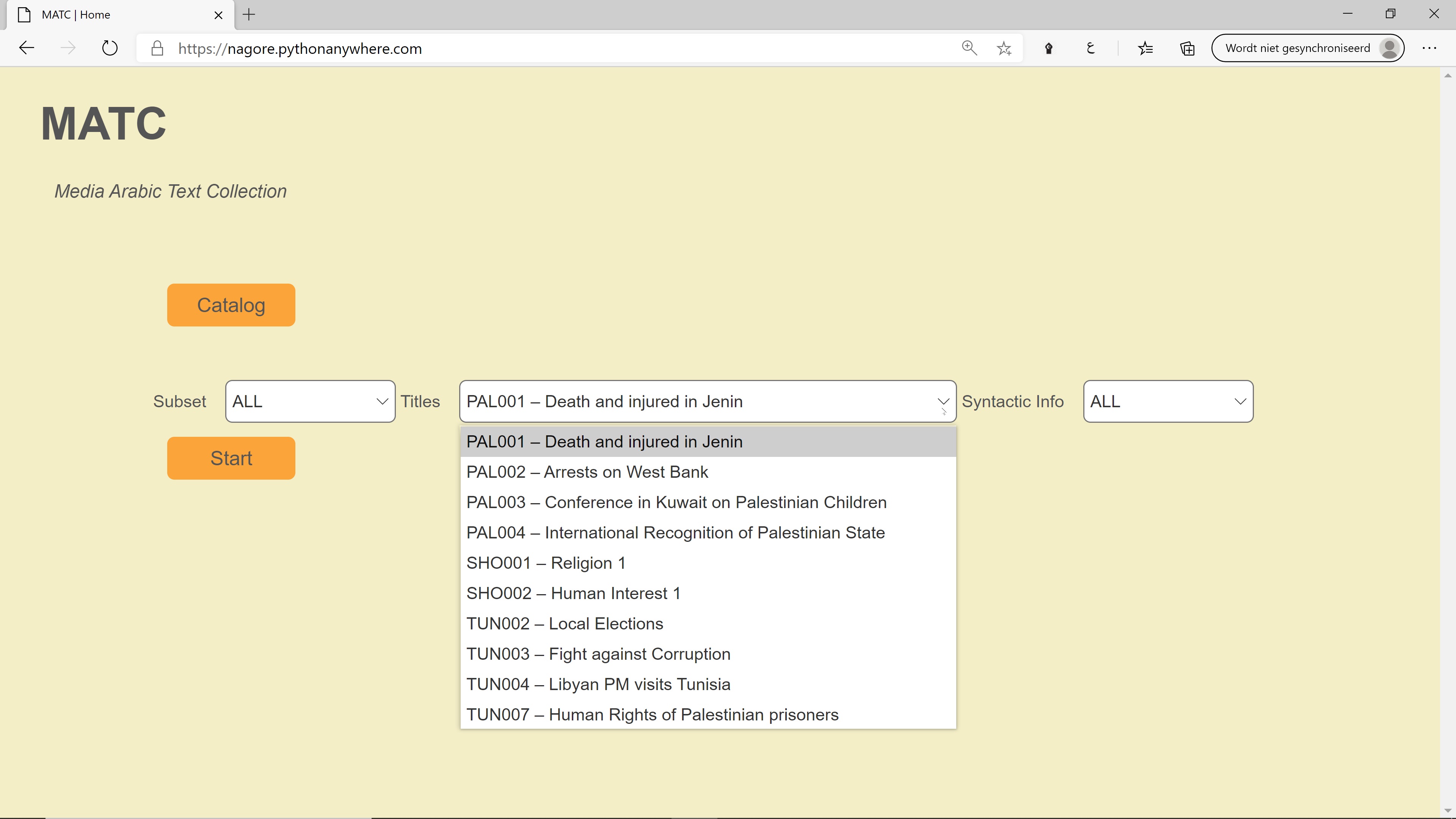Are you a student of Arabic?
Do you want to know more about the didactic principles of the Media Arabic Text Collection? If yes, please continue reading this page.
Do you want to start using the Media Arabic Text Collection? If yes, please click on this link to the practical tips how to use the Media Arabic Text Collection.
There is a video on YouTube in which I explain how the MATC works. Link: https://youtu.be/ySEwWeoj7vc
NEW: Radio fragments in the MATC
NEW: Launch of the Advanced Level of the MATC
NEW: June 2025: New function in MATC
Introduction
This project covers training and improvement of reading and comprehension skills in Media Arabic for those who are at the intermediate high or advanced low stage in their learning (B1 and/or B2 of the CEFR) and who are advancing from comprehension on the sentence level to comprehension on the text level. The project’s text collection facilitates the transition from reading texts written for educational purposes to the next phase of reading authentic texts written by native speakers to convey a message to other native speakers.
For this purpose I have created a collection of texts and a web-based tool for presenting these texts, equipped with various tabs presenting information on different linguistic levels. These levels will be presented after the explanation of the didactic principles.
Didactic principles
The collection of Media Arabic texts is treated and presented on the basis of two main didactic principles and two secondary principles.
The main principles cover the lexical level (vocabulary) and the syntactic level. The secondary principles cover phraseology (combinations of words) and connectors (words creating coherence in a text).
On the lexical level it is my personal experience that a limited vocabulary of 2500-2600 content words (i.e., not function words like pronouns, prepositions, etc.) is sufficient to cover 90% - 95% of most media reports covering non- specialized topics. This vocabulary is available as a pdf and students are strongly encouraged to memorise these words. A separate page tells more about the vocabulary.
The texts will provide glosses to less frequent words.
On the syntactic level it is my experience as a teacher of Arabic that students can run into
'syntactic hurdles' while reading sentences. The hurdles are difficulties in recognizing the various constituents of a sentence and the relationships between these constituents.
In this collection of texts I have developed a set of codes inserted into sentences to help students overcome those syntactic hurdles and thus better understand what they are reading. The principles of the set of codes and hurdles are explained on a separate page.
The set of syntactic codes is divided into three proficiency levels. The user can choose the level appropriate to his proficiency.
Secondary didactic principles:
On a more advanced level of language proficiency the learner has to acquire knowledge of phraseology, i.e., combinations of words (often collocations) or multi-word expressions (idiomatic expressions or fixed expressions). These relations between words in the texts are indicated in order to improve the awareness of the learners of these combinations.
On another page I present a table in which I have merged together phraseology of all texts in the current collection.
Texts consist of sentences and the relationship between sentences (causal, temporal), and the coherence of a text is created by specific words expressing these relations. Those words are called connectors. Connectors can be conjunctions, adverbs or prepositions, but content words like ‘cause’, ‘result’, ‘next’, etc. can also be considered connectors since they can be essential for the coherence of a text. This category of content words is called 'signal words'
Information available at various linguistic levels
Each text from the collection will be presented in different ways using separate tabs. The specific tabs are discussed below on a separate page, here I will briefly mention the different types of information.
Each text will appear in 10 tabs and on each tab a different type of linguistic information will be added to the text.
The first tab contains meta information about the text.
The other tabs contain linguistic information on different levels:


Arabic Media Text Collection by Jan Hoogland is licensed under CC BY-NC-ND 4.0